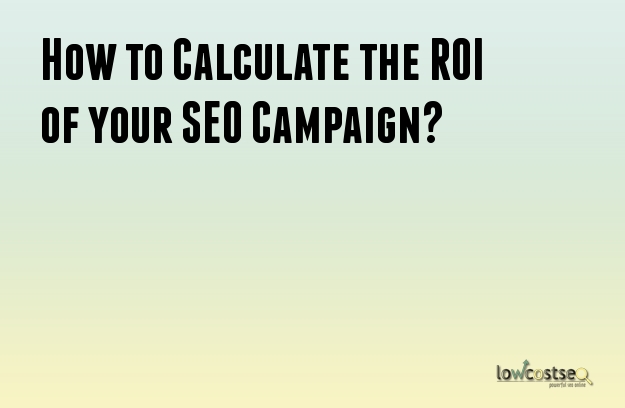
How Profitable is my SEO?
This article will examine the way in which your business can calculate the return on investment (ROI) for your Search Engine Optimisation (SEO) campaign. ROI is a key performance indicator (KPI) for any marketing campaigns, including SEO.
Firstly, ROI as a percentage is calculated by dividing net profit by initial investment, multiply by 100.
SEO, as an internet marketing strategy, takes into account how engines work, what people search for, key terms and preferred search engines for a target audience. In order to calculate the ROI of a given SEO, the SEO specialist must take into account the initial capital, fixed costs such as wages (for search engine optimisers), cost for collecting data and cataloguing costs. Here, to determine revenue gained from the SEO campaign, optimisers must consider conversion rates, PPC (pages per click) and number of hits on their website.
Therefore, net profits will equal revenue (defined by hits on website) minus all costs (fixed and variable) which include wages, initial capital outlays, cost of research and collecting data, database and search engine fees and finally, cataloguing costs. This figure is then divided by initial investment, which is the original capital, multiply it by 100 to derive a percentage figure.
Other factors to consider in launching an SEO marketing campaign are intangible costs such as timeliness, as well as percentage market share for each search engine in the given location or country. Before ROI can be calculated, market research has to be done to ensure that launching an SEO campaign is profitable in the given location and if the product/company itself will need relevant internet accessibility. Your marketing specialists must determine if getting organic web traffic is optimal and beneficial for your business in the long run.
Another simpler way to find ROI (not in percentage terms) is to minus the cost of investment from the gain from investment, divided by the cost of investment. This may be simpler to use, but does not give a percentage figure to expand upon and use as a growth tool for future goals. The calculated figure will not give you a complete representation of how effective your SEO campaign is.
Successful search optimisation takes in to account language translations for various websites and search engines, the cost of registration of domain names with a foreign language in the target market and finally, a web hosting that provides a local IP address. Apart from these variable costs that may be subjective to the project, the fundamentals of cost regarding search engine optimisations are relatively the same, regardless of the process.
It is imperative to drill down the numbers of your SEO campaign to identify where the leakages or gains are in order to fine-tune your campaign continuously.
In essence, it is crucial to receive a positive ROI that shows promising gains in the future and scope for growth. Even if this is small, it will be relatively proportionate to initial investment. The time frame of achieving a target ROI must also be established realistically in order to achieve more specific goals as a better evaluation tool.
